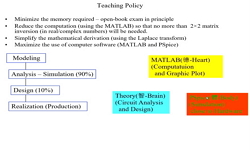목적: 우리나라에서 과민성 장 증후군의 빈도와 이와 연관된 인자를 알아보기 위하여 단일기관에서 건강 검진을 받는 사람들을 대상으로 설문조사를 시행하였다. 대상 및 방법: 2005년 3윌부...
http://chineseinput.net/에서 pinyin(병음)방식으로 중국어를 변환할 수 있습니다.
변환된 중국어를 복사하여 사용하시면 됩니다.
- 中文 을 입력하시려면 zhongwen을 입력하시고 space를누르시면됩니다.
- 北京 을 입력하시려면 beijing을 입력하시고 space를 누르시면 됩니다.



건강 검진자에서 과민성 장 증후군의 빈도 및 연관 인자 = The Frequency and Related Factors of Irritable Bowel Syndrome in Health Check up Subjects건강 검진자에서 과민성 장 증후군의 빈도 및 연관 인자
한글로보기https://www.riss.kr/link?id=A5004238
- 저자
- 발행기관
- 학술지명
- 권호사항
-
발행연도
2006
-
작성언어
-
- 주제어
-
KDC
500
-
등재정보
SCIE,SCOPUS,KCI등재
-
자료형태
학술저널
- 발행기관 URL
-
수록면
136-143(8쪽)
-
KCI 피인용횟수
5
- 제공처
-
0
상세조회 -
0
다운로드
부가정보
국문 초록 (Abstract)
목적: 우리나라에서 과민성 장 증후군의 빈도와 이와 연관된 인자를 알아보기 위하여 단일기관에서 건강 검진을 받는 사람들을 대상으로 설문조사를 시행하였다. 대상 및 방법: 2005년 3윌부터 2005년 8윌까지 관동대학교 의과대학 명지병원에서 건강 검진을 받는 사람들을 대상으로 하여, 미리 제작된 설문지를 작성하게 하였다. 설문지는 로마 기준 II를 우리말로 번역하여 질문형식으로 바꾸었으며 설사형, 변비형, 혼합형의 아형과 세부적인 증상을 확인할 수 있는 항목, 인구통계학적인 항목 등을 포함하였다. 기본적인 문진, 말초혈액검사, 혈청생화학검사, 갑상선가능검사, 대변잠혈검사, 상부소화관내시경검사, 복부초음파검사 등의 건강 검진 자료를 분석하여 기질적인 질환에 대한 평가를 하였으며, 과민성 장 증후군 발생과 연관된 인자를 분석하였다. 결과: 총 3083명의 대상자들 가운데 설문지 작성을 거부하거나 제외기준에 해당하는 사람을 제외하고 총 2,345명(76.1%)의 대상자가 연구에 포함되었다. 이 중 남자는 1,298명(55.4%), 여자는 1,047명(44.6%) 이었고 이들의 평균 연령은 49.0±13.6세였다. 로마기준 Ⅱ에 따른 과민성 장 증후군의 빈도는 8.3%였다. 증상에 따른 아형은 설사형 30.8%, 변비형 23.6%, 그라고 설사-변비 혼합형이 45.6%로 혼합형이 가장 많았다. 35세 미만의 젊은 연령에서 과민성 장 증후군의 빈도가 13.1%로 유의하게 높았고, 또한 체질량지수가 18.5 미만인 저체중에서의 빈도가 21.0%로 유의하게 높았다(p<0.01). 그러나 연령, 거주지역, 직업군, 흡연 및 음주력, 당뇨와 고혈압의 과거력, 빈혈의 유무, 혈액형, 역류성 식도염, 소화성궤양 및 지방간 유무, 그라고 헬리코박터 균 감염 유무에 따라서는 과민성 장 증후군 빈도에 차이가 없었다. 결론: 로마기준 II를 적용하여 건강 검진자를 대상으로 조사한 우리나라 과민성 장 증후군의 빈도는 8.3%이며, 35세 미만의 젊은 연령과 저체중에서 유의하게 빈도가 높았다.
다국어 초록 (Multilingual Abstract)
Background/Aims: Irritable bowel syndrome (IBS) is a common health problem affecting a substantial proportion of the population. The aims of this study were to evaluate the frequency of IBS that satisfied the ROME II criteria and to analyze the factor...
Background/Aims: Irritable bowel syndrome (IBS) is a common health problem affecting a substantial proportion of the population. The aims of this study were to evaluate the frequency of IBS that satisfied the ROME II criteria and to analyze the factors that could be associated with the frequency of IBS in subjects who underwent health check-ups in South Korea. Methods: We included a total of 2345 (76.1%) subjects among the 3083 subjects who visited the Health Promotion Center of Kwandong University College of Medicine, Myongji hospital from March 2005 through August 2005. They were interviewed by using a questionnaire that was comprised of the demographic features, the ROME II criteria and the probable associated factors. The frequency of IBS was analyzed according to various factors such as the demographic characteristics, the past history, the body mass indexes (BMI), blood tests and the endoscopic and abdominal sonographic findings. Results: The frequency of IBS was 8.3% (7.9% in males and 8.8% in females). Of the IBS patients, 30.8% had characteristics of diarrhea-predominance, 23.6% had characteristics of constipation-predominan while 45.6% had alternating symptoms. The most frequent symptom was a sense of incomplete evacuation (60.0%), followed by bloating or distention (54.9%), straining (36.9%), urgency (29.7%), and mucus in stool (9.2%). The frequency of IBS was significantly higher for the younger age subjects (age<35) and for the under-weight subjects (BMI<18.5), and these were the factors independently related with the presence of IBS on logistic regression analysis. The frequencies of IBS were not different in terms of gender, area of residence, occupation, smoking, alcohol intake, the diabetes mellitus and hypertension histories, anemia, ABO blood groups, Helicobacter pylori infection and the presence of reflux esophagitis, peptic ulcer or fatty liver disease. Conclusions: The frequency of IBS was 8.3%, according to the ROME II criteria, in the subjects who underwent health-check ups in our region. IBS was more common in the younger age subjects and the under-weight people. (Kor J Neurogastroenterol Motil 2006;12:136-143)
참고문헌 (Reference)
1 "Towards positive diagnosis of the irritable bowel" 2 : 653-654, 1978
2 "The prevalences of gastrointestinal symptoms in a rural community in Korea" 6 : 31-43, 2000
3 "The prevalence,symptom characteristics,and impact of irritable bowel syndrome in an Asian urban community" 99 : 924-931, 2004
4 "The prevalence, patterns and impact of irritable bowel syndrome: an international survey of 40,000 subjects" 17 : 643-650, 2003
5 "The prevalence of irritable bowel syndrome in Asan city:questionnaire survey in random Korean population" 10 : 49-56, 2004
6 "The irritable bowel syndrome" 344 : 1846-1850, 2001
7 "Review article:irritable bowel syndrome" 11 : 3-15, 1997
8 "Prevalence of irritable bowel syndrome in Korea:population-based survey using the Rome II criteria" 21 : 1687-1692, 2006
9 "Prevalence of gastrointestinal symptoms in a multiracial Asian population,with particular reference to reflux-type symptoms" 93 : 1816-1822, 1998
10 "Prevalence and impact of upper and lower gastrointestinal symptoms in the Greek urban general population" 40 : 412-421, 2005
1 "Towards positive diagnosis of the irritable bowel" 2 : 653-654, 1978
2 "The prevalences of gastrointestinal symptoms in a rural community in Korea" 6 : 31-43, 2000
3 "The prevalence,symptom characteristics,and impact of irritable bowel syndrome in an Asian urban community" 99 : 924-931, 2004
4 "The prevalence, patterns and impact of irritable bowel syndrome: an international survey of 40,000 subjects" 17 : 643-650, 2003
5 "The prevalence of irritable bowel syndrome in Asan city:questionnaire survey in random Korean population" 10 : 49-56, 2004
6 "The irritable bowel syndrome" 344 : 1846-1850, 2001
7 "Review article:irritable bowel syndrome" 11 : 3-15, 1997
8 "Prevalence of irritable bowel syndrome in Korea:population-based survey using the Rome II criteria" 21 : 1687-1692, 2006
9 "Prevalence of gastrointestinal symptoms in a multiracial Asian population,with particular reference to reflux-type symptoms" 93 : 1816-1822, 1998
10 "Prevalence and impact of upper and lower gastrointestinal symptoms in the Greek urban general population" 40 : 412-421, 2005
11 "Irritable bowel syndrome:guidelines for diagnosis" 2 : 92-95, 1989
12 "Irritable bowel syndrome:definition,diagnosis and epidemiology" 13 : 371-384, 1999
13 "Irritable bowel syndrome prevalence varies enormously depending on the employed diagnostic criteria:comparison of Rome II versus previous criteria in a general population" 36 : 1155-1161, 2001
14 "Irritable bowel syndrome in the United States:prevalence,symptom patterns and impact" 21 : 1365-1375, 2005
15 "Irritable bowel syndrome in general practice:prevalence,characteristics,and referral" 46 : 78-82, 2000
16 "Irritable bowel syndrome in developing countries--a disorder of civilization or colonization" 17 : 317-324, 2005
17 "Functional gastrointestinal disorders in patients with gastrointestinal symptoms" 33 : 741-748, 1999
18 "Functional gastrointestinal disorders in Canada:first population-based survey using Rome II criteria with suggestions for improving the questionnaire" 47 : 225-235, 2002
19 "Functional bowel disorders and functional abdominal pain" 45 : 43-47, 1999
20 "Epidemiological aspects of irritable bowel syndrome in Europe and North America" 64 : 200-204, 2001
21 "Definition and epidemiology of irritable bowel syndrome" 8 : 215-221, 2002
22 "Cross-cultural adaptation of health related quality of life measures:literature review and proposed guidelines" 46 : 1417-1432, 1993
23 "Clinical profile of irritable bowel syndrome" 4 : 15-16, 1985
24 "Chronic upper abdominal pain:site and radiation in various structural and functional disorders and the effect of various foods" 33 : 743-748, 1992
25 "Chronic upper abdominal pain due to duodenal ulcer and other structural and functional causes:its localization and nocturnal occurrence" 11 : 515-519, 1996
26 "AGA technical review on irritable bowel syndrome" 123 : 2108-2131, 2002
27 "A comparison and validity of various diagnostic criteria of irritable bowel syndrome" 8 : 21-30, 2002
동일학술지(권/호) 다른 논문
-
- 대한소화기기능성질환·운동학회
- 박정호 ( Jung Ho Park )
- 2006
- SCIE,SCOPUS,KCI등재
-
- 대한소화기기능성질환·운동학회
- 박무인 ( Moo In Park )
- 2006
- SCIE,SCOPUS,KCI등재
-
골반저 근실조에서 전기자극 치료와 바이오피드백 병합 치료의 효과
- 대한소화기기능성질환·운동학회
- 민현주 ( Hyun Ju Min )
- 2006
- SCIE,SCOPUS,KCI등재
-
Caffeine, theophylline 및 adenosine 이 기니 픽 대장 통과 시간에 미치는 효과
- 대한소화기기능성질환·운동학회
- 문종태 ( Jong Tae Moon )
- 2006
- SCIE,SCOPUS,KCI등재
분석정보
인용정보 인용지수 설명보기
학술지 이력
| 연월일 | 이력구분 | 이력상세 | 등재구분 |
|---|---|---|---|
| 2023 | 평가예정 | 해외DB학술지평가 신청대상 (해외등재 학술지 평가) | |
| 2020-01-01 | 평가 | 등재학술지 유지 (해외등재 학술지 평가) |  |
| 2010-05-11 | 학술지명변경 | 한글명 : 대한소화관 운동학회지 -> Journal of Neurogastroenterology and Motility (JNM)외국어명 : Korean Journal of Neurogastroenterology and Motility -> Journal of Neurogastroenterology and Motility (JNM) |  |
| 2010-05-10 | 학회명변경 | 한글명 : 대한소화관운동학회 -> 대한소화기 기능성질환∙운동학회 |  |
| 2010-01-01 | 평가 | 등재학술지 유지 (등재유지) |  |
| 2007-01-01 | 평가 | 등재학술지 선정 (등재후보2차) |  |
| 2006-01-01 | 평가 | 등재후보 1차 PASS (등재후보1차) |  |
| 2005-05-24 | 학회명변경 | 영문명 : The Korean Society Of Gastrointestinal Motility -> The Korean Society of Neurogastroenterology and Motility |  |
| 2004-07-01 | 평가 | 등재후보학술지 선정 (신규평가) |  |
학술지 인용정보
| 기준연도 | WOS-KCI 통합IF(2년) | KCIF(2년) | KCIF(3년) |
|---|---|---|---|
| 2016 | 2.36 | 0.65 | 1.69 |
| KCIF(4년) | KCIF(5년) | 중심성지수(3년) | 즉시성지수 |
| 1.19 | 1.03 | 0.459 | 0.23 |




 KISS
KISS






